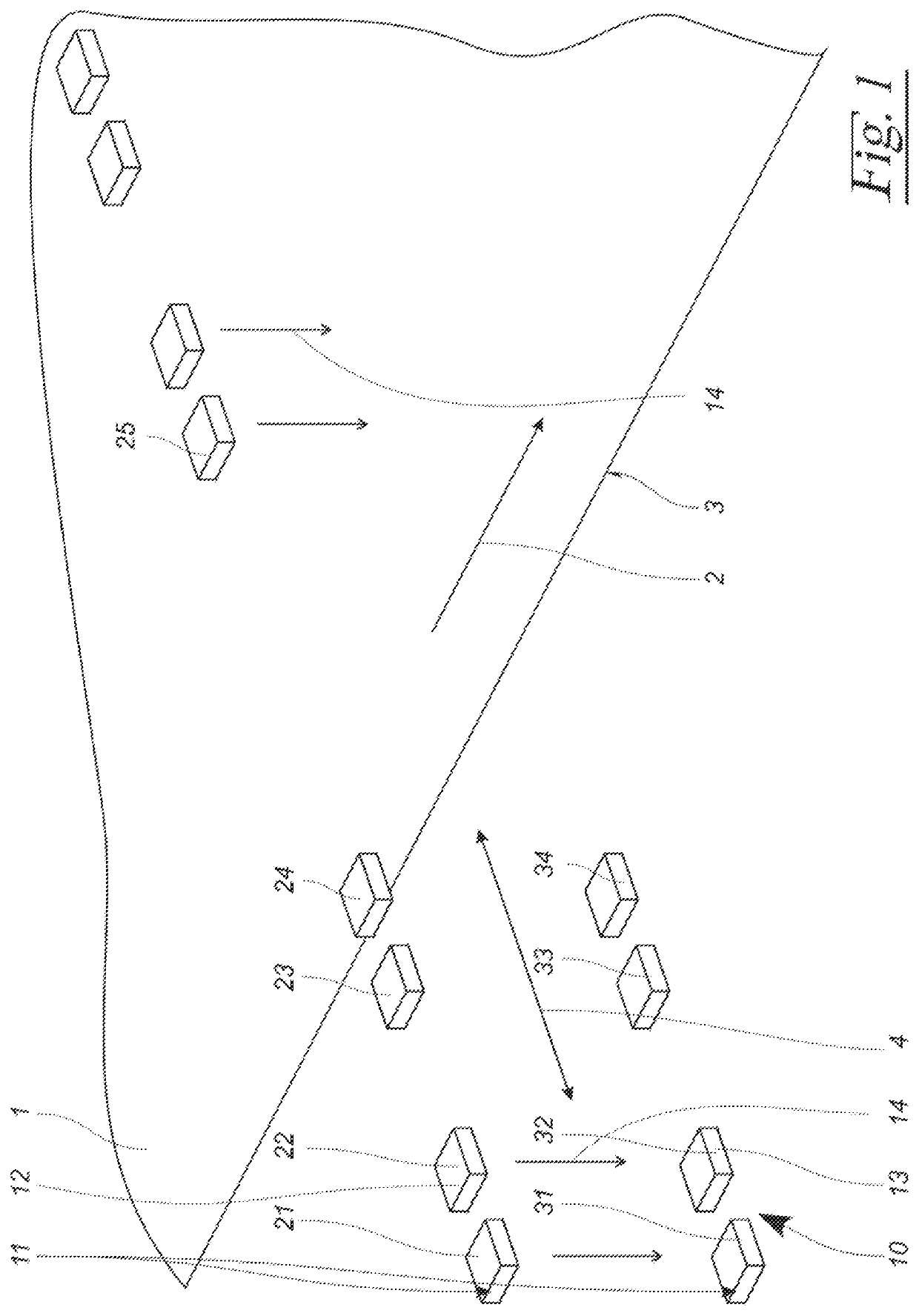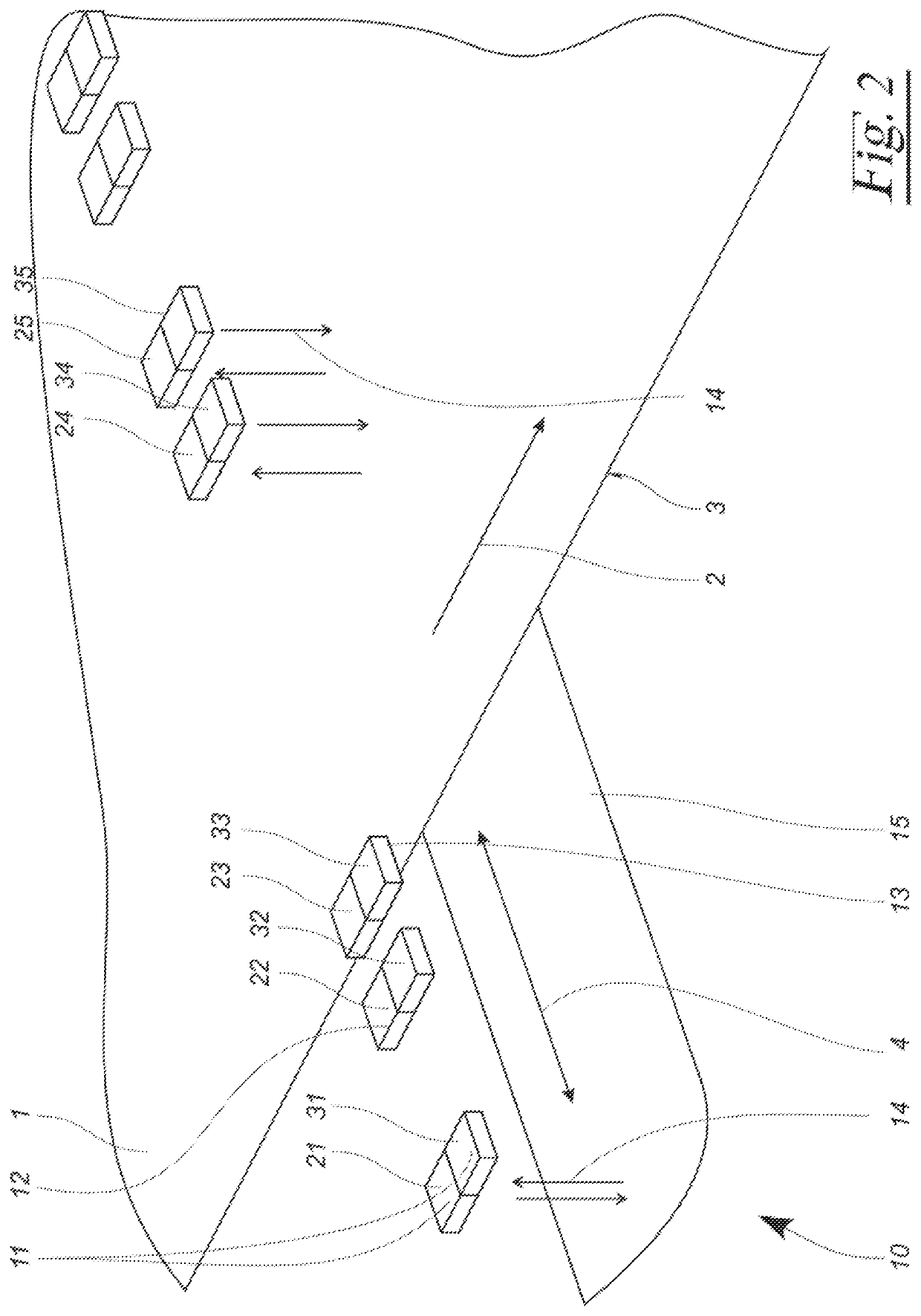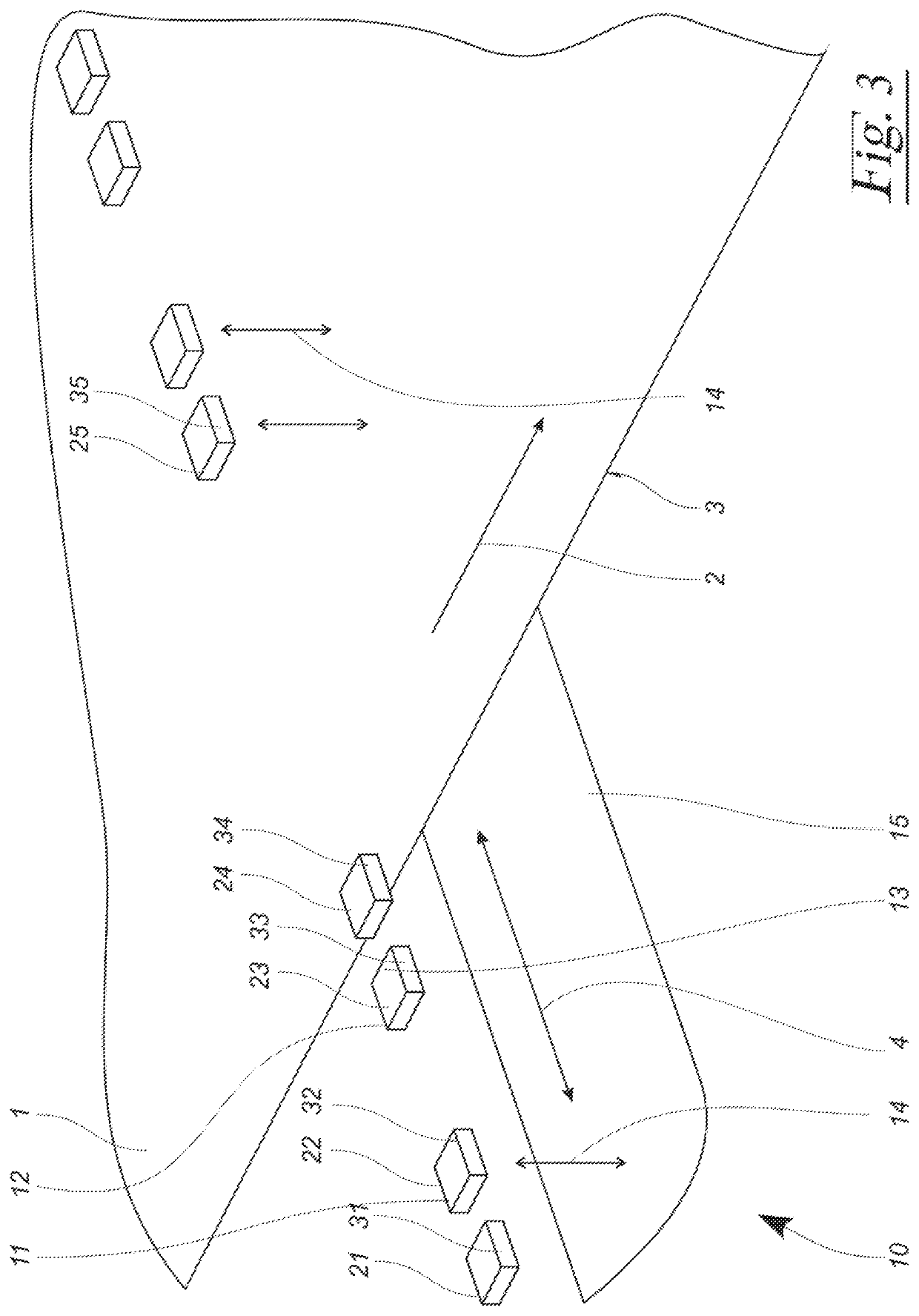Sensor for detecting at least one edge of a running product web
a technology of a product web and a sensor, which is applied in the direction of instruments, using reradiation, transportation and packaging, etc., can solve the problems of large conversion and computation expenditure in the analysis of the signals supplied by the receiver, and the number of active elements is large, so as to simplify the analysis of the signals received, increase the detection width of the sensor, and reduce the effect of the detection cos
- Summary
- Abstract
- Description
- Claims
- Application Information
AI Technical Summary
Benefits of technology
Problems solved by technology
Method used
Image
Examples
Embodiment Construction
[0028]FIG. 1 shows a three-dimensional schematic illustration of a first embodiment of the subject matter of the invention. A product web 1 moves along a run direction 2 and has an edge 3. The position of the edge 3 in a detection direction 4 extending perpendicular to the run direction 2 is detected by a sensor 10.
[0029]The sensor 10 has a plurality of active elements 11, of which some are formed as transmitters 12 and others as receivers 13. The transmitters 12 can emit waves 14, in particular in the form of light, while the receivers 13 can receive these waves 14 and convert them into an electrical signal. If the product web 1 is located between a transmitter 12 and a receiver 13, the waves 14 are thus shaded by the product web 1, whereby the position of the edge 3 of the product web 1 can be roughly ascertained. In addition, the electrical signal generated by the receiver 13 is also analysed similarly in its signal level. It is to be taken into consideration in this case that th...
PUM
| Property | Measurement | Unit |
|---|---|---|
| width | aaaaa | aaaaa |
| widths | aaaaa | aaaaa |
| piezoelectric | aaaaa | aaaaa |
Abstract
Description
Claims
Application Information
 Login to View More
Login to View More - R&D
- Intellectual Property
- Life Sciences
- Materials
- Tech Scout
- Unparalleled Data Quality
- Higher Quality Content
- 60% Fewer Hallucinations
Browse by: Latest US Patents, China's latest patents, Technical Efficacy Thesaurus, Application Domain, Technology Topic, Popular Technical Reports.
© 2025 PatSnap. All rights reserved.Legal|Privacy policy|Modern Slavery Act Transparency Statement|Sitemap|About US| Contact US: help@patsnap.com



